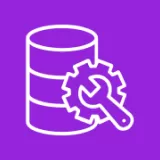When developing efficient databases, achieving performance, scalability, and long-term maintainability is an essential value to perceive in an application. MongoDB has become one of the most popular database solutions available today in the NoSQL world because of its flexible schema, JSON-like documents, and scalability features. It is a natural choice for modern applications dealing with various and unstructured data at scale.
However, with flexibility comes the obligation to design the database appropriately. Without a proper schema strategy or design pattern, MongoDB deployments could run into performance bottlenecks, inconsistent queries, and scaling issues rather quickly.
This article will discuss the most useful NoSQL database design patterns in MongoDB, including examples of use cases, benefits, and best practices to enable better data modeling, performance, and scalability.
1. Key MongoDB Design Patterns
1.1 Extended Reference Pattern
The extended reference pattern leverages references to maintain relationships between collections, as opposed to embedding frequently changing or large documents.
- When to Use: Use when related data is vast, or changes too frequently to be embedded.
- Example: An order collection that references separate user profile documents.
Benefit: Provides a balance between performance and data flexibility while eliminating unnecessary duplicate data.
1.2 Bucket Pattern
The bucket pattern is used most frequently for time-series or event-driven data. In this instance, multiple smaller documents are aggregated together and enclosed in one “bucket”.
- When to Use: For logging or IoT data, or for monitoring use cases where there is the potential to generate many events.
- Example: Rather than storing 100 temperature readings as 100 separate documents, you can store them all as one bucket document.
Benefit: There is reduced storage overhead, and the query is more performant for time-based sequential data.
1.3 Outlier Pattern
Not all data fits the same model. The outlier pattern places the unusually large or atypical documents into another collection.
- When to Use: For datasets where many documents are small, but a few may have extra-large fields or might be attached with extra attributes.
- Example: A products catalog where most of the common products may have small specs, but some high-end models or specifications may have extensive configurations.
Benefit: There is no risk of creating oversized documents which could slow down or hinder the ability to query the consistent query performance.
1.4 Attribute Pattern
Applications like e-commerce, content management systems (CMS), or product catalogs often need flexible schemas to be able to accommodate arbitrary attributes. The attribute pattern allows applications to define dynamic attributes as key-value pairs that are stored inside documents.
- When to Use: For dynamic fields where there is varied user-defined format between records.
- Example: Storing specifications of a product, like color, weight, dimensions, and details/features, as key-value pairs.
Benefit: You get schema flexibility, while still making queries efficient and practices manageable.
1.5 Subset Pattern
When a document includes too many attributes, and only a few attributes are accessed frequently, the subset pattern will extract the most frequently accessed attributes into a new document.
- When to Use: for large user profiles, product records, histories/logs, where only some of the data is used regularly.
- For Example: user documents can be split into a user_core – name, email and login, and user_extended – preferences and history.
Benefit: Read performance is improved by not fetching attributes that are not needed.
1.6 Computed Pattern
Instead of calculating the value each time you need to know it, you can pre-compute the value. Based on your application logic, you allow the values to be calculated and stored directly inside of your documents.
- When to Use: for workloads with analytics side effects, or dashboards with repeating queries.
- For Example: store a total order count, or a total average rating directly from the user profile document.
Benefit: By storing pre-computed results, you can reduce the run time of the query executions in turn making the application more responsive.
1.7 Tree Pattern
Hierarchical data like categories, organizational structures, or comment threads can be easily modeled using the tree pattern.
- When to Use: If the data you are working with requires parent and child relationships, or nested hierarchies.
- For Example: An e-commerce site with categories → sub categories → products.
Benefit: Enables you to efficiently traverse any nested structures using references/embedded arrays.
2. Best Practices
- Analyze access patterns before selecting between embedding and referencing.
- Embed when the data is tightly coupled, and is regularly accessed together.
- Reference when the data is independent or loosely coupled – is hardly ever accessed together.
- Use indexes, for performance in queries where possible.
- Monitor performance and refactor schema as per business requirements.
- To avoid having oversized documents, relate to the bucket, subset, or outlier patterns.
Find the right balance between keeping both scalability and maintainability in mind – what works at small dataset may not work at scale.
3. How Empirical Edge Can Help
Empirical Edge can help with designing, developing and optimizing your optimal MongoDB solutions. Empirical Edge has experienced professionals, and many NoSQL design patterns have been incorporated and are being applied with proven success to ensure:
- The optimal schema design based on performance & scalability factors
- Efficient indexing, query optimization
- Scalable architecture for growing data
- Best practice monitoring, and high availability
Conclusion
MongoDB provides the flexibility that they have built into the schemas of the database so the developers can pose their own unique interpretation and design of data based on the varying application needs. However, the best steps for success will be to apply the correct NoSQL design patterns: bucket, subset, outlier, and computed.
When we follow these patterns and best practices within business preserves, we unlock the value of MongoDB, and its true value in performance, scalability, and maintainability.
With adaptive needs or strategy, the power of MongoDB will be at either end of the size spectrum – from small applications to large-scale enterprise applications that require efficiency, speed, or growth.










